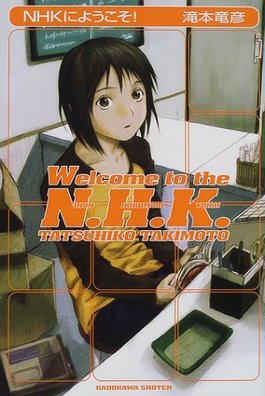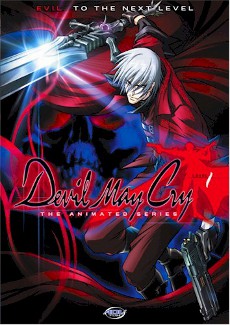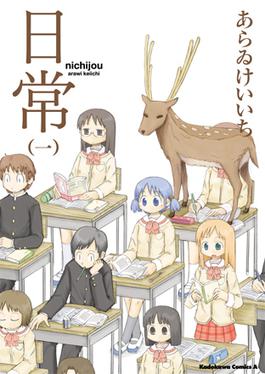
A fansub is a version of a foreign film or foreign television program, typically anime or dorama which has been translated by fans and subtitled into a language usually other than that of the original.
The history of anime in the United States began in 1961, when Magic Boy and The White Snake Enchantress, both produced by Toei Animation, became the first two anime films to receive documented releases in the country. Anime has since found success with a growing audience in the region, with Astro Boy often being noted as the first anime to receive widespread syndication, especially in the United States. Although a handful titles were translated before 1970, such as Speed Racer and Eight Man anime wouldn't regrow into popularity in the US until the 1990s, commonly referred to as the "anime boom," is credited with much of anime's enduring relevance to popular culture outside Japan.

A.D. Vision Holdings, Inc. was an American multimedia entertainment distributor headquartered in Houston, Texas, and founded in 1992 by video game fan John Ledford and anime fans Matt Greenfield and David Williams. The company specialized in home video production and distribution, theatrical film distribution, merchandising, original productions, magazine and comic book publishing. They also ran Anime Network, a television channel devoted to airing the company's titles. Some of their titles were Neon Genesis Evangelion, Super Dimension Fortress Macross, RahXephon, Full Metal Panic, Azumanga Daioh, Elfen Lied, Gantz, Red Garden, and Le Chevalier D'Eon.

The Prince of Tennis is a Japanese manga series written and illustrated by Takeshi Konomi. The manga was serialized in Shueisha's Weekly Shōnen Jump from July 1999 to March 2008, with its chapters collected in 42 tankōbon volumes. Viz Media licensed the manga for English release in North America.
AnimeSuki is a website and once considered "... the largest database of BitTorrent anime shows" that focused on providing unlicensed anime fansubs using the BitTorrent peer-to-peer system. The website was created by GHDpro on December 26, 2002. Animesuki was not a tracker; instead, it provided links to many trackers across the web. It did not list pornography or series that had been licensed in North America. However, in 2013 it stopped maintaining its database of torrents, and the forums remain as the only active part of the site.

Genshiken (げんしけん) is a Japanese manga series by Shimoku Kio about a college club for otaku and their lifestyle. The title is a shortening of the club's official name, Gendai Shikaku Bunka Kenkyūkai (現代視覚文化研究会), or "The Society for the Study of Modern Visual Culture". The series has also been adapted into an anime directed by Tsutomu Mizushima. The manga originally ran in Kodansha's magazine Monthly Afternoon from April 2002 to May 2006, and has been reprinted in nine bound volumes.

Sgt. Frog, known in Japan as Keroro Gunso, is a Japanese manga series written and illustrated by Mine Yoshizaki. It was launched in Monthly Shōnen Ace in April 1999. The story follows the attempts of a platoon of frog-like alien invaders to conquer Earth. Sergeant Keroro, the titular character, is the leader of the platoon, but is at the mercy of a human family of three after being captured by them. Keroro is forced to do meaningless chores and errands for the family after his army abandons his platoon on Earth. The series was later adapted into an anime television series by Sunrise, which ran for 358 episodes from April 2004 to April 2011. A second 23-episode series was broadcast from March to September 2014. A new anime project has been announced.

Lucky Star is a Japanese four-panel comic strip manga series by Kagami Yoshimizu. It has been serialized in Kadokawa Shoten's Comptiq magazine since December 2003. Cameo strips were published in other magazines such as Shōnen Ace and others. Lucky Star focuses on the daily lives of four girls, there is little in terms of an ongoing plot.

Welcome to the N.H.K. is a Japanese novel written by Tatsuhiko Takimoto. It was published by Kadokawa Shoten in Japan in January 2002, and in English by Tokyopop in October 2007. The story revolves around Tatsuhiro Sato, a 22-year-old hikikomori, an asocial recluse, who gets aid from a strange girl who seems to know a lot about him, despite never having met him before. Common themes throughout the story deal with depression, anxiety, isolation, existential dread, the hardships of life and how people must deal with them in their own way. The novel profusely analyzes the hikikomori phenomenon, which is relatively widespread in Japan.

Code Geass: Lelouch of the Rebellion, often referred to simply as Code Geass, is a Japanese anime television series produced by Sunrise. It was directed by Gorō Taniguchi and written by Ichirō Ōkouchi, with original character designs by Clamp. Set in an alternate timeline, it follows the exiled prince Lelouch Lamperouge, who obtains the "power of absolute obedience" from a mysterious woman named C.C. Using this supernatural power, known as Geass, he leads a rebellion against the rule of the Holy Britannian Empire, commanding a series of mecha battles.

Otakuthon is a Canadian anime convention promoting Japanese animation (anime), Japanese graphic novels (manga), related gaming and Japanese pop-culture. It is held annually for 3 days in downtown Montreal during a weekend in August. It is a non-profit, fan-run anime convention that was initiated by Concordia University's anime club, named Otaku Anime of Concordia University. The name "Otakuthon" is a portmanteau of the Japanese word "otaku" and "marathon". Otakuthon strives to be a bilingual event, having programming, the masquerade and the program book in both official languages. The first edition of Otakuthon was held in 2006 in mid-June, but later moved to early-mid August / late July from 2007 onward. The most recent edition, Otakuthon 2024, was held on August 2-4, 2024 at the Palais des congrès de Montréal.

Devil May Cry: The Animated Series is a Japanese anime series based on the video game series by Capcom. It is set sometime between Devil May Cry and Devil May Cry 2. The show is produced by the anime studio Madhouse and directed by Shin Itagaki. It debuted on the WOWOW TV network in Japan on June 14, 2007, and ran 12 episodes.

Haruhi Suzumiya is a Japanese light novel series written by Nagaru Tanigawa and illustrated by Noizi Ito. It was first published in 2003 by Kadokawa Shoten in Japan with the novel The Melancholy of Haruhi Suzumiya, and has since been followed by 11 additional novel volumes, an anime television series adaptation produced by Kyoto Animation, four manga series, an animated film, two original net animation series and several video games.

Nabari no Ou is a Japanese manga series written and illustrated by Yuhki Kamatani. It was serialized in Square Enix's shōnen manga magazine Monthly GFantasy from May 2004 to August 2010, with its chapters collected in 14 tankōbon volumes. In North America, it was licensed for English release by Yen Press. A 26-episode anime television series animated by J.C.Staff and directed by Kunihisa Sugishima was broadcast on TV Tokyo from April to September 2008. In North America, the anime series was licensed by Funimation.

Toriko (トリコ) is a Japanese manga series written and illustrated by Mitsutoshi Shimabukuro. It was serialized in Shueisha's shōnen manga magazine Weekly Shōnen Jump from May 2008 to November 2016, with its chapters collected into 43 tankōbon volumes. The series follows the adventures of Toriko, a Gourmet Hunter, as he searches for rare, diverse foods to complete a full-course meal. On his journey, he is accompanied by a timid chef who wants to improve his skills.

The anime and manga fandom traces back to the 1970s and has an international reach. Anime includes animated series, films and videos, while manga includes manga, graphic novels, drawings, and related artworks.

Nichijou is a Japanese manga series written and illustrated by Keiichi Arawi. The manga began serialization in the December 2006 issue of Kadokawa Shoten's manga magazine Shōnen Ace, and was also serialized in Comptiq between the March 2007 and July 2008 issues. Kadokawa Shoten later published all chapters of the series' initial run in ten tankōbon volumes from July 2007 to December 2015. After a six-year hiatus, the manga began serialization again in 2021.
AnimeNation was an American business that included RentAnime.com, a discussion forum, anime industry news, and a column called "Ask John". It was previously a retailer of anime and manga products until 2014 and an anime licensing and distribution company under the name AN Entertainment.

Ghost in the Shell: Arise, also known in Japan as Mobile Armored Riot Police: Arise, is an original video animation and television series that serves as a re-imagining of Masamune Shirow's Ghost in the Shell. The series features new character designs and is directed by Kazuchika Kise, screenplay by Tow Ubukata, and music by Cornelius.
















